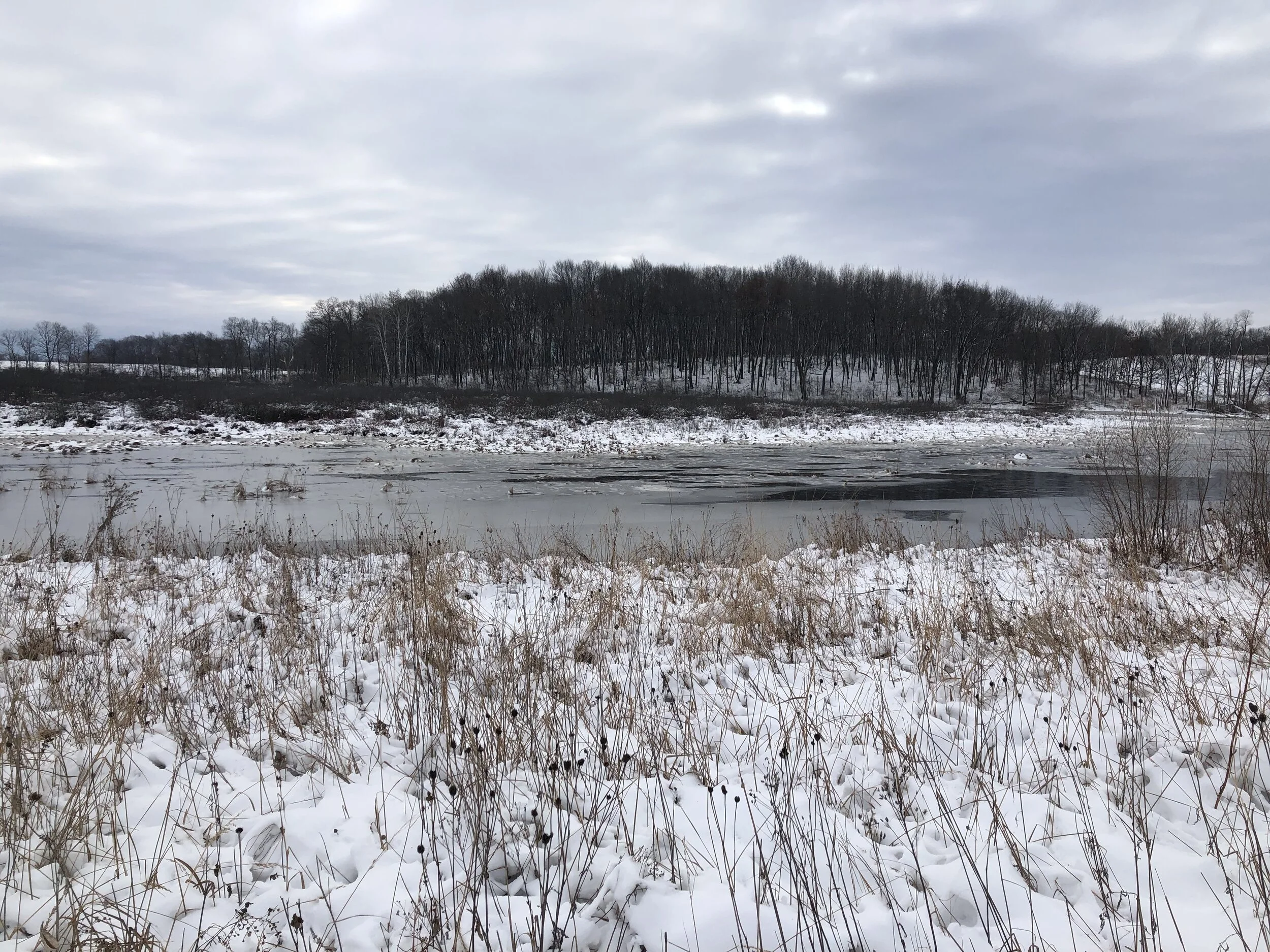A report from Madison Audubon's Goose Pond Sanctuary that was sent to Wisbird (Nov. 17, 2021)
Swans:
Winter probably arrived late in North America's tundra in 2021. Usually swans migrate to Goose Pond around November 1st. The tundra swans have been in North Dakota for many weeks and headed east when winter arrived in the northern Great Plains (specifically, North Dakota). On Monday November 15th, Aaron Holschback eBirded 10 Tundra Swans. We only saw a few yesterday. On November 17th, Spike Millington reported at 10:00 a.m. 550 Tundra Swans " A big arrival, only 22 young birds." Al Roske sent us a wide angle photo taken after 11:00 a.m. and we counted 580 swans in the photo. The east pond is dry and the west pond is maybe 8 inches deep with no arrowhead tubers. The swans are feeding in the picked cornfields just like the geese. The swans like to field feed about 2.5 miles southwest of Goose Pond (southeast of the County I and Meek Road intersection). If you plan to visit Goose Pond the sooner the better to see the swans since they will leave when Goose Pond freezes up and head east to Chesapeake Bay.
Goose Pond waterfowl, photo by Al Roske
Other birds:
On November 3rd, Spike had 21 Eurasian Collared-doves. Calla Norris and Graham had a Short-eared Owl on Nov. 9th. On November 10th, Aaron counted 3,500 Canada Geese and 1,350 Mallards. Spike has had counts of around 2,000 Mallards. On Nov. 15, we counted 193 Sandhill Cranes and Spike reported 3,000 Ring-billed Gulls.
Goose Pond Sanctuary’s “Pond Cam” shows live updates on what’s happening at the pond. See for yourself at madisonaudubon.org/pond-cam
The waterfowl migration has been impressive on our "Pond Cam" and has kept Peter Leege busy moving the pond cam around for best viewing. The last hour of daylight is the best time for viewing. However, you can back the camera up for 12 hours by moving the red line to the left. The cam also has infrared and a microphone.
We invited you to visit Goose Pond any day of the week during daylight hours. Enjoy!
Written by Mark Martin, Sue Foote-Martin, Graham Steinhauer (Goose Pond Sanctuary staff/managers), JD Arnston and Peter Leege (Pond Cam volunteers), and Al Roske (photographer)











